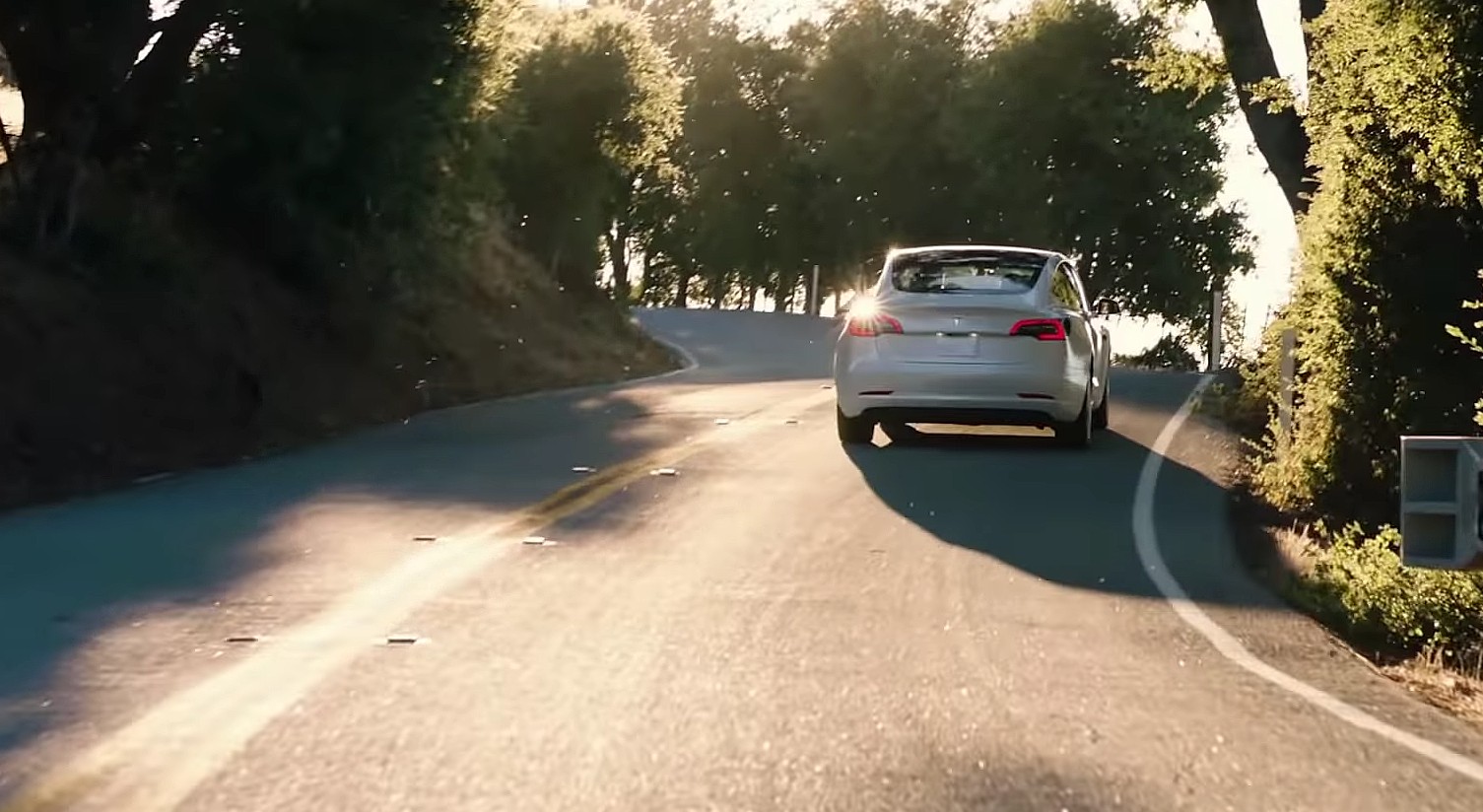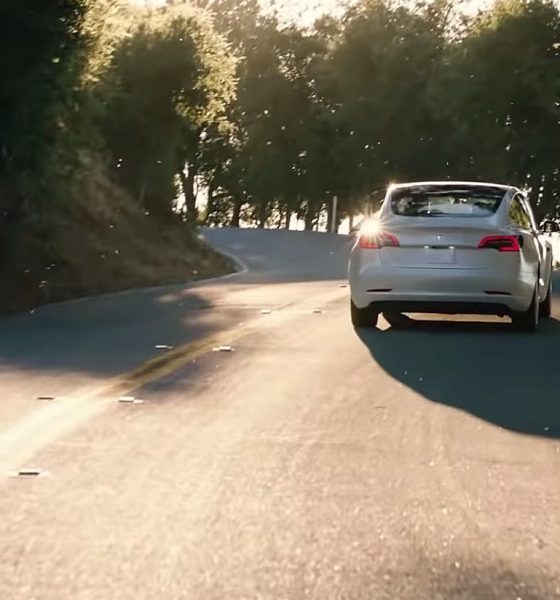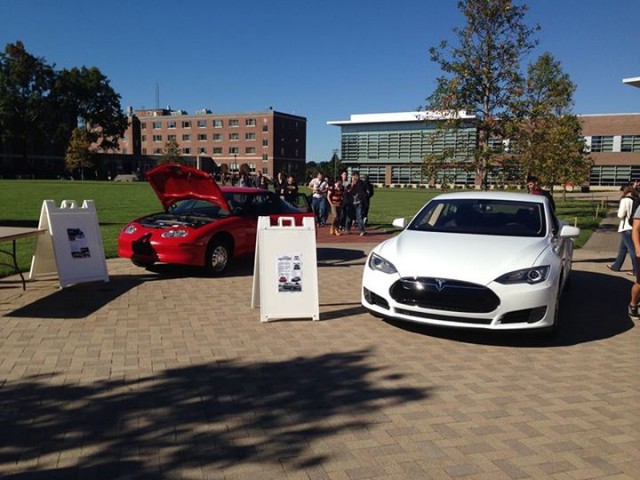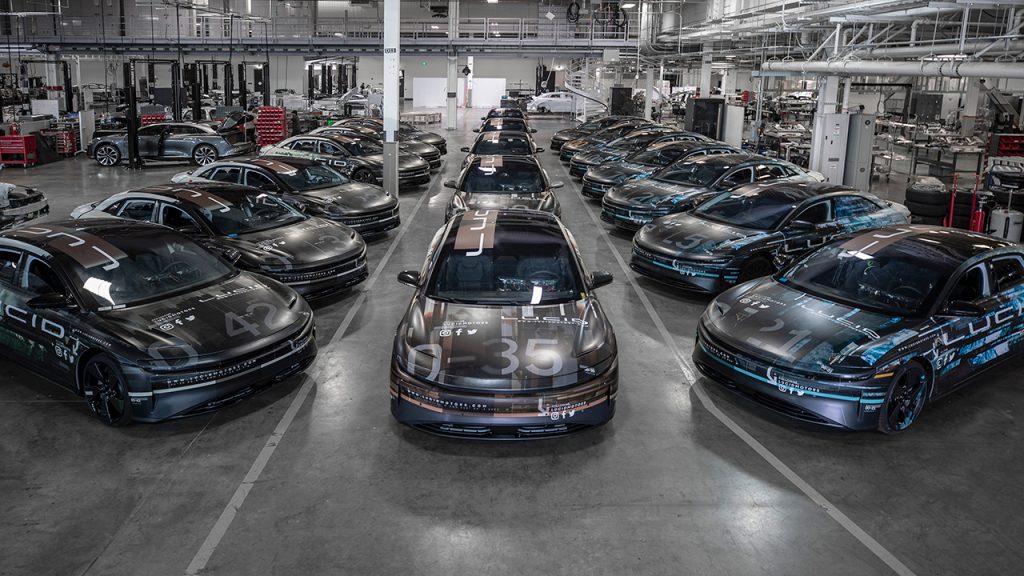

News
Tesla and EV-only carmakers are legacy auto’s karma for killing the electric car
Karma could be a cruel mistress. It has a tendency to sneak up from behind before delivering a cruel haymaker to the jaw. Karma takes a while to rev up sometimes, but when it comes, things change, and sometimes these changes can be painful. Considering the state of the auto market, as well as the momentum carried by companies like Tesla, Lucid Motors, and Rivian, it appears that legacy carmakers are finally dealing with some well-deserved karma — for killing the electric car.
The general death of EVs amidst the emergence of the internal combustion engine during the early days of automobiles is understandable. Back then, fossil fuels presented a cheap, efficient way to travel, with vehicles like the Baker Electric and the Porsche P1 taking a very long time to charge. However, the death of the electric car that happened in the late 90s was something that is far more difficult to justify.
During the mid-90s, a modern electric vehicle was created by General Motors, and it could have been the driving force of a change in the motoring world. The vehicle, dubbed the EV1, was on the bleeding edge of tech at the time, with its three-phase alternating current induction motor and lead-acid (later changed to NiMH) battery. It had enough range for inner-city travel, it was fast, and it was sleek. But inasmuch as it was beloved by those who leased it, the EV1 was fated to meet an unfortunate demise.

In a series of events that inspired the creation of the documentary “Who Killed the Electric Car,” General Motors decided to discontinue the EV1, reclaiming the car from the leasees and destroying the vehicles. Segments of the acclaimed documentary depicted customers asking GM if they could just purchase the all-electric car, with some even holding demonstrations for the EV. But despite all these efforts, GM let the EV1 die, and most, save for a few, were unceremoniously crushed.
There were many speculations surrounding the EV1’s demise. General Motors insisted that the vehicle was not commercially viable. But the trend of large, gas-guzzling SUVs that followed the EV1 in GM’s lineup contributed to rumors that the electric car was killed because it represented a potential threat to the fossil fuel industry. In a sense, the electric car did die a painful, crushing death in the 90s, and it was not until Tesla came to the picture that EVs emerged as viable alternatives to gas-powered cars once more.
And it’s not like there was no resistance to the emergence of electric cars like Tesla, either. Tesla faced and continues to face strong opposition, and if it weren’t for its dedicated team and Elon Musk’s own stubbornness and resilience, the company could have followed the same fate as the EV1. But with vehicles like the Model S changing the game and cars like the Model 3 disrupting vehicle classes that used to be dominated by the internal combustion engine, it eventually became evident that this time around, it will be far more difficult to kill the electric car.

Amidst the success of companies like Tesla, even legacy automakers are playing catch up. Vehicles like the Jaguar I-PACE and the Chevy Bolt EV are representations of this. But even with these efforts, the pace of innovation in the electric vehicle segment is fast. Companies like Tesla work like tech companies, failing fast and failing forward. And now, legacy auto does not only have Tesla to contend with. Other premier electric cars from companies that are EV-only are coming. Tesla may have put EVs back on the map, but now, more companies are joining the fray.
There’s Lucid Motors with the Air, a hyper-luxury sedan that would likely put the Mercedes S-Class in its place. There’s the Rivian R1T and R1S, which bring luxury and comfort even in places off the beaten path. Even Bollinger Motors is attacking a small niche of rock-crawling vehicles with its no-nonsense, rough-and-tough B1 and B2. These are only the tip of the iceberg as well. Veteran auto is even getting increasingly dedicated to EVs, as evidenced by Porsche’s decision to revamp its entire factory in Zuffenhausen just to get the company ready for more electric vehicles like the Taycan.
It appears that this time around, killing the electric car will not be as simple or easy as before. Unlike the early 1900s, EVs now charge fast and they go the distance, and unlike the 90s, electric cars are now being embraced by mainstream consumers. There’s a demand for them, and EVs are now being noted for their performance. Electric cars are here to stay, and every single one that gets released is additional karma to an auto industry that appears to have dug itself far too deep into fossil fuels.

News
Tesla FSD V14.2.1 is earning rave reviews from users in diverse conditions
Tesla’s Full Self-Driving (Supervised) software continues its rapid evolution, with the latest V14.2.1 update drawing widespread praise.

Tesla’s Full Self-Driving (Supervised) software continues its rapid evolution, with the latest V14.2.1 update drawing widespread praise for its smoother performance and smarter decision-making.
Videos and firsthand accounts from Tesla owners highlight V14.2.1 as an update that improves navigation responsiveness, sign recognition, and overall fluidity, among other things. Some drivers have even described it as “more alive than ever,” hinting at the system eventually feeling “sentient,” as Elon Musk has predicted.
FSD V14.2.1 first impressions
Early adopters are buzzing about how V14.2.1 feels less intrusive while staying vigilant. In a post shared on X, Tesla owner @LactoseLunatic described the update as a “huge leap forward,” adding that the system remains “incredibly assertive but still safe.”
Another Tesla driver, Devin Olsenn, who logged ~600 km on V14.2.1, reported no safety disengagements, with the car feeling “more alive than ever.” The Tesla owner noted that his wife now defaults to using FSD V14, as the system is already very smooth and refined.
Adverse weather and regulatory zones are testing grounds where V14.2.1 shines, at least according to testers in snow areas. Tesla watcher Sawyer Merritt shared a video of his first snowy drive on unplowed rural roads in New Hampshire, where FSD did great and erred on the side of caution. As per Merritt, FSD V14.2.1 was “extra cautious” but it performed well overall.
Sign recognition and freeway prowess
Sign recognition also seemed to show improvements with FSD V14.2.1. Longtime FSD tester Chuck Cook highlighted a clip from his upcoming first-impressions video, showcasing improved school zone behavior. “I think it read the signs better,” he observed, though in standard mode, it didn’t fully drop to 15 mph within the short timeframe. This nuance points to V14.2.1’s growing awareness of temporal rules, a step toward fewer false positives in dynamic environments.
FSD V14.2.1 also seems to excel in high-stress highway scenarios. Fellow FSD tester @BLKMDL3 posted a video of FSD V14.2.1 managing a multi-lane freeway closure due to a police chase-related accident. “Perfectly handles all lanes of the freeway merging into one,” the Tesla owner noted in his post on X.
FSD V14.2.1 was released on Thanksgiving, much to the pleasant surprise of Tesla owners. The update’s release notes are almost identical to the system’s previous iteration, save for one line item read, “Camera visibility can lead to increased attention monitoring sensitivity.”
News
Tesla FSD Supervised ride-alongs in Europe begin in Italy, France, and Germany
The program allows the public to hop in as a non-driving observer to witness FSD navigate urban streets firsthand.

Tesla has kicked off passenger ride-alongs for Full Self-Driving (Supervised) in Italy, France and Germany. The program allows the public to hop in as a non-driving observer to witness FSD navigate urban streets firsthand.
The program, detailed on Tesla’s event pages, arrives ahead of a potential early 2026 Dutch regulatory approval that could unlock a potential EU-wide rollout for FSD.
Hands-Off Demos
Tesla’s ride-along invites participants to “ride along in the passenger seat to experience how it handles real-world traffic & the most stressful parts of daily driving, making the roads safer for all,” as per the company’s announcement on X through its official Tesla Europe & Middle East account.
Sign-ups via localized pages offer free slots through December, with Tesla teams piloting vehicles through city streets, roundabouts and highways.
“Be one of the first to experience Full Self-Driving (Supervised) from the passenger seat. Our team will take you along as a passenger and show you how Full Self-Driving (Supervised) works under real-world road conditions,” Tesla wrote. “Discover how it reacts to live traffic and masters the most stressful parts of driving to make the roads safer for you and others. Come join us to learn how we are moving closer to a fully autonomous future.”
Building trust towards an FSD Unsupervised rollout
Tesla’s FSD (Supervised) ride-alongs could be an effective tool to build trust and get regular car buyers and commuters used to the idea of vehicles driving themselves. By seating riders shotgun, Tesla could provide participants with a front row seat to the bleeding edge of consumer-grade driverless systems.
FSD (Supervised) has already been rolled out to several countries, such as the United States, Canada, Australia, New Zealand, and partially in China. So far, FSD (Supervised) has been received positively by drivers, as it really makes driving tasks and long trips significantly easier and more pleasant.
FSD is a key safety feature as well, which became all too evident when a Tesla driving on FSD was hit by what seemed to be a meteorite in Australia. The vehicle moved safely despite the impact, though the same would likely not be true had the car been driven manually.
News
Swedish union rep pissed that Tesla is working around a postal blockade they started
Tesla Sweden is now using dozens of private residences as a way to obtain license plates for its vehicles.

Two years into their postal blockade, Swedish unions are outraged that Tesla is still able to provide its customers’ vehicles with valid plates through various clever workarounds.
Seko chairman Gabriella Lavecchia called it “embarrassing” that the world’s largest EV maker, owned by CEO Elon Musk, refuses to simply roll over and accept the unions’ demands.
Unions shocked Tesla won’t just roll over and surrender
The postal unions’ blockade began in November 2023 when Seko and IF Metall-linked unions stopped all mail to Tesla sites to force a collective agreement. License plates for Tesla vehicles instantly became the perfect pressure point, as noted in a Dagens Arbete report.
Tesla responded by implementing initiatives to work around the blockades. A recent investigation from Arbetet revealed that Tesla Sweden is now using dozens of private residences, including one employee’s parents’ house in Trångsund and a customer-relations staffer’s home in Vårby, as a way to obtain license plates for its vehicles.
Seko chairman Gabriella Lavecchia is not pleased that Tesla Sweden is working around the unions’ efforts yet again. “It is embarrassing that one of the world’s largest car companies, owned by one of the world’s richest people, has sunk this low,” she told the outlet. “Unfortunately, it is completely frivolous that such a large company conducts business in this way.”
Two years on and plates are still being received
The Swedish Transport Agency has confirmed Tesla is still using several different workarounds to overcome the unions’ blockades.
As noted by DA, Tesla Sweden previously used different addresses to receive its license plates. At one point, the electric vehicle maker used addresses for car care shops. Tesla Sweden reportedly used this strategy in Östermalm in Stockholm, as well as in Norrköping and Gothenburg.
Another strategy that Tesla Sweden reportedly implemented involved replacement plates being ordered by private individuals when vehicles change hands from Tesla to car buyers. There have also been cases where the police have reportedly issued temporary plates to Tesla vehicles.









